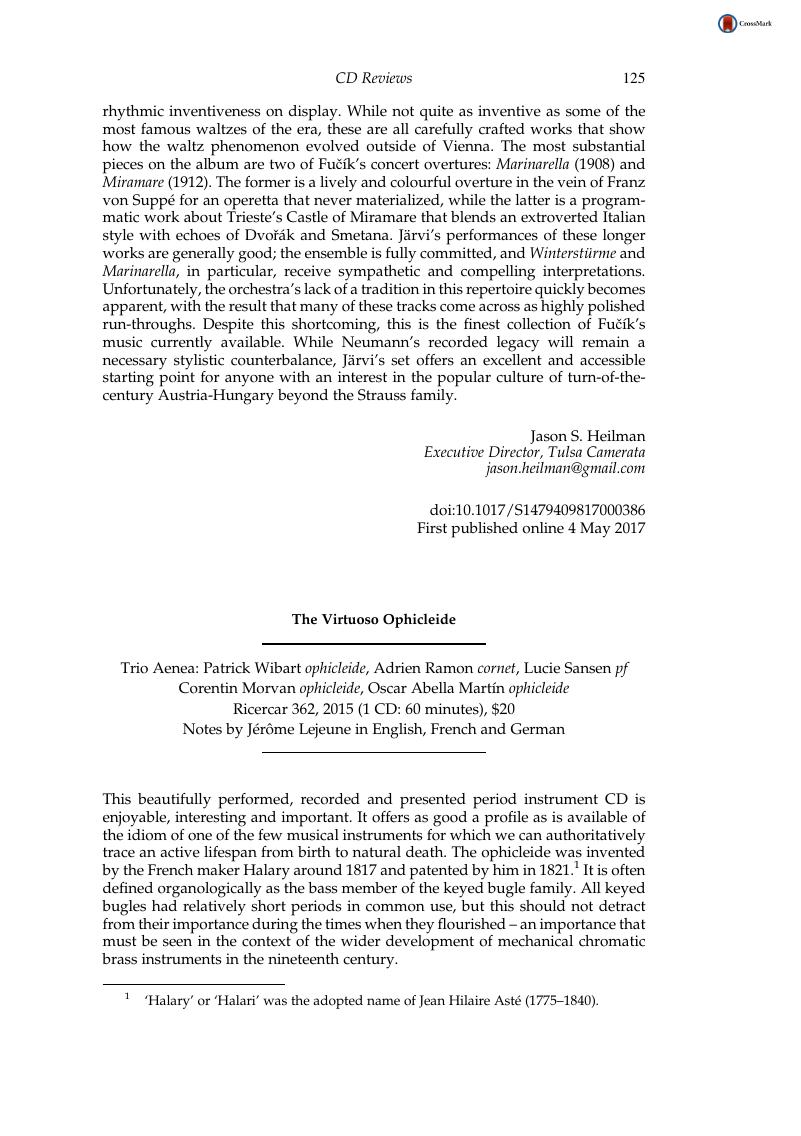No CrossRef data available.
Published online by Cambridge University Press: 04 May 2017

1 ‘Halary’ or ‘Halari’ was the adopted name of Jean Hilaire Asté (1775–1840).
2 See Herbert, Trevor and Barlow, Helen, Music and the British Military in the Long Nineteenth Century (Oxford: Oxford University Press, 2013)CrossRefGoogle Scholar.
3 Patenting does not always indicate who invented what, and this is true of many of the developments introduced to brass instruments from the late eighteenth to the mid-nineteenth centuries. Haliday’s patent was ‘For certain improvements to the bugle horn’. For a survey of the keyed bugle, see Lasocki, David, ‘New Light on the Early History of the Keyed Bugle, Part I’ Historic Brass Society Journal 21 (2009): 11–50 Google Scholar; and ‘New Light on the Early History of the Keyed Bugle, Part II’, Historic Brass Society Journal 22 (2010): 19–54, available online at www.historicbrass.org/Publications/HistoricBrassSocietyJournal/tabid/68/Default.aspx.
4 For an analysis of the instrumentations revealed in the surviving forms submitted for these events, see Herbert, Trevor and Myers, Arnold, ‘Music for the Multitude: Accounts of the Brass Bands Entering Enderby Jackson’s Crystal Palace Contests in the 1860s’, Early Music 38 (2010): 571–584 CrossRefGoogle Scholar.
5 The Cyfarthfa band was the private band of the iron magnate Robert Thompson Crawshay; see Herbert, Trevor, ed., The British Brass Band: A Musical and Social History (Oxford: Oxford University Press, 2000)Google Scholar.
6 Royal Society of Musicians Archive, Samuel Hughes file.